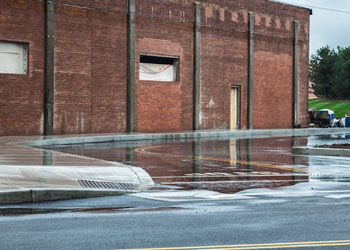
Did you know that your pavement goes through distinct life stages? In general, it takes for asphalt to go through the stages of wear, distress, and failure. But this is assuming that you're taking good care of your pavement.
For example, sealcoating helps protect asphalt from UV rays, precipitation, and automobile fluids. Likewise, filling cracks and potholes helps stop water from seeping into the foundation.
Here's how to recognize if your asphalt pavement is in distress.
Alligator Cracking
is easy to spot because it resembles the scaly hide of an alligator. It's also a sign that you'll need to replace your pavement soon.
Once the foundation fails, this damage shows up at the surface as alligator cracking. Alligator cracking may also happen when the surface layer of asphalt is too thin.
Waves
There are two different types of asphalt wave patterns—ruts and washboards.
Ruts are waves that show up in the wheel paths that follow traffic. They occur when the foundation wasn't engineered to withstand current levels of traffic.
Washboard waves show up where vehicles make frequent stops, such as at intersections. They occur when contractors mix inferior asphalt blends. For example, an inexperienced contractor may use the wrong blend for your climate.
Flushing
Asphalt contractors call the smooth or shiny patches in asphalt “flushing.” These patches occur when a contractor adds too much asphalt cement to the mix. As such, it's not uncommon for flushing to appear by pavement with washboard waves.
Wrinkles or Tears
During installation, the asphalt surface needs to bond with its foundation. Otherwise, you may notice wrinkles or tears on the surface within 12 months of paving. The good news is that you can prevent this type of damage by hiring a reputable asphalt contractor.
Pumping
Is the water table high where you live? If so, it's important that you hire a contractor who'll build the proper drainage system. That way, the groundwater won't permeate the asphalt sublayers. If this happens, the weight of traffic can pump water and mud up to the surface.
Pumping can also happen if you don't repair cracks and potholes as soon as they appear. Once water seeps into the foundation, it'll also flow under and within the pavement. This can reduce road traction, even on a sunny day.
How Can a Contractor Repair Pavement Damage?
Do you recognize any of the signs of distressed pavement? If so, consider hiring an asphalt contractor to help prolong the life of your paved asphalt surface. The sooner you fill cracks and potholes, the less likely you'll need to pay for early replacement.
Depending on the extent of damage, you may be able to get away with replacing only the surface. But this will depend on us catching the damage in time.
Request a Free Estimate With A-1 Asphalt
A-1 Asphalt is an experienced asphalt contractor in West Michigan. As such, we'd be more than happy to help you with your next asphalt pavement project.
To request a free estimate, please call A-1 Asphalt at (800) 871-4401. You may also fill out our online contact form and someone from our team will reach out to you soon.
This blog post has been updated.